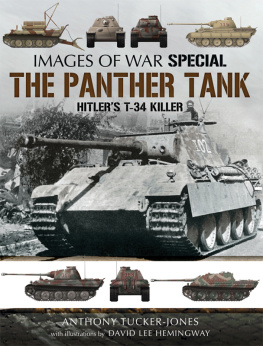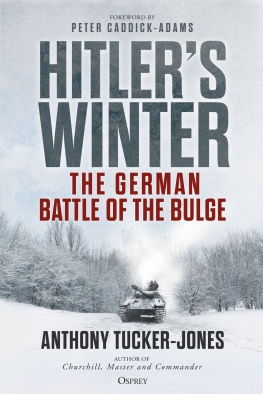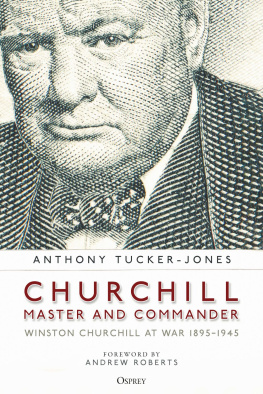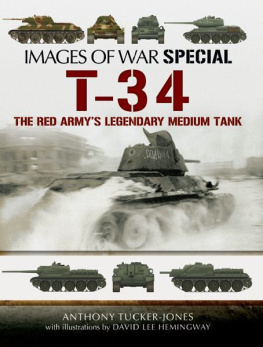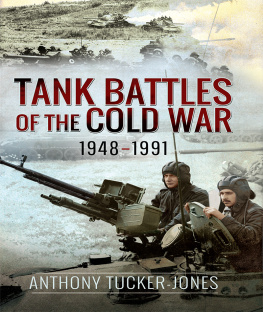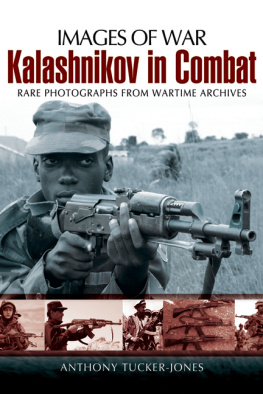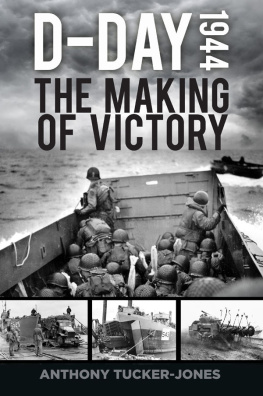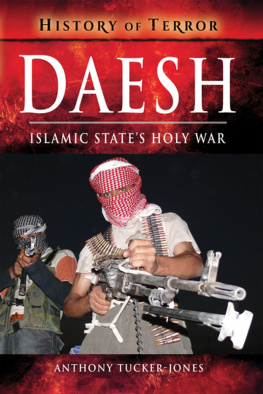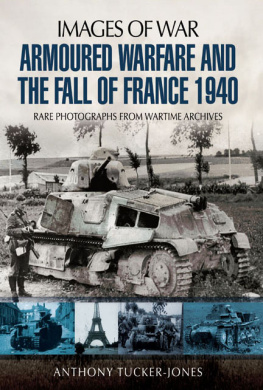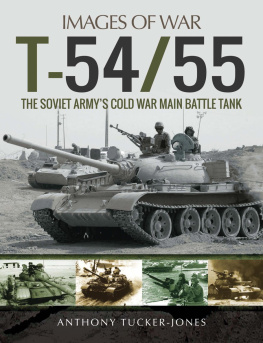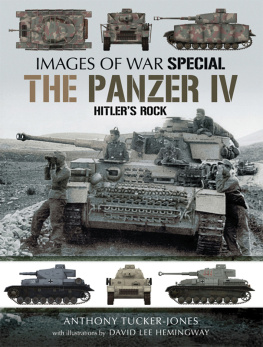Anthony Tucker-Jones - The Panther Tank
Here you can read online Anthony Tucker-Jones - The Panther Tank full text of the book (entire story) in english for free. Download pdf and epub, get meaning, cover and reviews about this ebook. year: 2017, publisher: Pen and Sword, genre: Science fiction. Description of the work, (preface) as well as reviews are available. Best literature library LitArk.com created for fans of good reading and offers a wide selection of genres:
Romance novel
Science fiction
Adventure
Detective
Science
History
Home and family
Prose
Art
Politics
Computer
Non-fiction
Religion
Business
Children
Humor
Choose a favorite category and find really read worthwhile books. Enjoy immersion in the world of imagination, feel the emotions of the characters or learn something new for yourself, make an fascinating discovery.
- Book:The Panther Tank
- Author:
- Publisher:Pen and Sword
- Genre:
- Year:2017
- Rating:5 / 5
- Favourites:Add to favourites
- Your mark:
- 100
- 1
- 2
- 3
- 4
- 5
The Panther Tank: summary, description and annotation
We offer to read an annotation, description, summary or preface (depends on what the author of the book "The Panther Tank" wrote himself). If you haven't found the necessary information about the book — write in the comments, we will try to find it.
The Panther Tank — read online for free the complete book (whole text) full work
Below is the text of the book, divided by pages. System saving the place of the last page read, allows you to conveniently read the book "The Panther Tank" online for free, without having to search again every time where you left off. Put a bookmark, and you can go to the page where you finished reading at any time.
Font size:
Interval:
Bookmark:

IMAGES OF WAR SPECIAL
THE PANTHER TANK

Disabled Panther tank captured at San Giovanni, Italy, 1944.
IMAGES OF WAR SPECIAL
HITLERS T-34 KILLER
RARE PHOTOGRAPHS FROM WARTIME ARCHIVES
Anthony Tucker-Jones
Illustrated by
David Lee Hemingway

First published in Great Britain in 2016 by
PEN & SWORD MILITARY
an imprint of
Pen & Sword Books Ltd,
47 Church Street,
Barnsley,
South Yorkshire
S70 2AS
Text copyright Anthony Tucker-Jones, 2016
Photographs copyright as credited, 2016
Every effort has been made to trace the copyright of all the photographs.
If there are unintentional omissions, please contact the publisher in writing, who will correct all subsequent editions.
A CIP record for this book is available from the British Library.
ISBN 978 1 47383 360 9
eISBN 978 1 47388 196 9
Mobi ISBN 978 1 47000 000 0
The right of Anthony Tucker-Jones to be identified as Author of this Work has been asserted by him in accordance with the Copyright, Designs and Patents Act 1988.
All rights reserved. No part of this book may be reproduced or transmitted in any form or by any means, electronic or mechanical including photocopying, recording or by any information storage and retrieval system, without permission from the Publisher in writing.
Pen & Sword Books Ltd incorporates the imprints of Pen & Sword Archaeology, Atlas, Aviation, Battleground, Discovery, Family History, History, Maritime, Military, Naval, Politics, Railways, Select, Social History, Transport, True Crime, Claymore Press, Frontline Books, Leo Cooper, Praetorian Press, Remember When, Seaforth Publishing and Wharncliffe.
For a complete list of Pen & Sword titles please contact
Pen & Sword Books Limited
47 Church Street, Barnsley, South Yorkshire, S70 2AS, England
E-mail:
Website: www.pen-and-sword.co.uk
T he Panther tank represented Hitlers great white hope, born out of necessity in the harsh Russian winter of 1941. Hitlers key panzer expert Heinz Guderian had swiftly identified the danger facing the German Army; it needed an answer to Mikhail Koshkins utilitarian T-34 tank. While most of the Red Armys tank designs had been easily overcome in the summer of 1941, it was the T-34 that represented the biggest long-term threat to Hitlers panzer forces.
Although the T-34 was almost strangled at birth by competing interests among the Soviet defence industries and was less than successful when it first deployed, Guderian appreciated that Hitler needed to counter this revolutionary tank quickly. However, it took German industry a year and a half to produce the Panther and then it fell foul of unending teething problems. Damningly, Guderian was to dub it our problem child. Despite Guderians best efforts to ensure the crews were fully proficient and the snags were resolved, Hitler insisted the Panther be thrown into battle immediately.
This decision was foolhardy as there were insufficient numbers to make a decisive impact at the Battle of Kursk. The decision to commit both the Panther and its heavier cousin the Tiger in penny packets was a tactical and strategic disaster. The Panther did not cover itself in glory at Kursk, instead continually breaking down, while its inexperienced crews were repeatedly ambushed in the opening days of the battle. Nonetheless, once fine-tuned it proved a worthy adversary on the Eastern Front, in Italy and in Normandy.
Guderian, in his memoirs Panzer Leader, recalled how he set off the chain of events that led to the Panther:
Numerous Russian T-34s went into action and inflicted heavy losses on the German tanks at Mzensk in 1941. Up to this time we had enjoyed tank superiority, but from now on the situation was reversed. The prospect of rapid decisive victories was fading in consequence. I made a report on this situation, which was for us a new one, and sent it to the Army Group; in this report I described in plain terms the marked superiority of the T-34 to our PzKpfw IV and drew the relevant conclusion as that must affect our future tank production.
This abrupt and unwelcome reversal of the panzers superiority, thanks to the unexpected appearance of the T-34, forced the German Army Staff out of its complacency about the performance of the Panzer Mk IV medium tank. Although the panzers had already come up against the T-34, during the summer it had suffered severe transmission problems, carried insufficient ammunition and had poorly trained crews who simply panicked. By the winter these shortcomings had been largely overcome.
It soon became apparent that the panzers were unable to cope with the mud, snow and ice. The panzers, like their Soviet counterparts, had quite narrow tracks that struggled with adverse conditions. The T-34s tracks were much wider, spreading the weight of the tank and giving it much better cross-country performance, especially in bad weather. Guderian took immediate action:
I concluded by urging a commission to be sent immediately to my sector of the front, and that it should consist of representatives of the Army Ordnance, the Armaments Ministry, the tank designers, and the firms that built tanks. If this commission was on the spot it could not only examine the destroyed tanks on the battlefield, but could also be advised by the men who had used them as to what should be included in the design for our new tanks. I also requested the rapid production of a heavy anti-tank gun with sufficient penetrating power to knock out the T-34.The commission appeared on the Second Panzer Armys front on 20 November 1941.
The commission worked quickly, investigating the key design features of the 30-ton T-34. These in fact were obvious: the sloping armour that gave a greater shot deflection thereby greatly enhancing the armour; the large simple road wheels and broad tracks which gave a stable and steady ride for the crew; and the overhanging gun where the recoil mechanism was partially outside the turret, which the Germans had always considered impractical for their panzers. Of these three the sloping armour was the most revolutionary element of the design.
The German Armaments Ministry was quick to act and on 25 November 1941 instructed the companies of Daimler-Benz and Maschinenfabrik Augsburg-Nrnberg (MAN) to produce two competing designs for a new medium tank in the 30-35 ton category under the ordnance designation of VK.3002. This required 60mm of frontal armour and 40mm of side armour, with the front and sides sloped in the same manner as the T-34s hull. Top speed was to be 55km/h (35mph). The assumption that the tank would not exceed 35 tons was to prove to be optimistic.
Insisting that two competing companies produce competing designs showed a complete lack of focus or urgency. Yet time was a luxury that could be ill afforded in light of the titanic struggle being waged on the Eastern Front. Time was of the essence and yet Hitler, as with the development of the Tiger tank, seemed happy to waste precious resources instead of insisting the panzer manufacturers coordinate their efforts.
The two designs were submitted to Heinrich Ernst Kniepkampf and the Waffenprufamt 6 (the German Armys Weapons Department or Heereswaffenamt, responsible for tank and armoured fighting vehicle procurement) in April 1942. Kniepkampf was one of Koshkins German counterparts; he had been with the Waffenprufamt 6 since 1936 and had worked his way up to chief engineer and designer. Most notably he had previously worked as a designer at MAN, casting doubts over his impartiality.
Font size:
Interval:
Bookmark:
Similar books «The Panther Tank»
Look at similar books to The Panther Tank. We have selected literature similar in name and meaning in the hope of providing readers with more options to find new, interesting, not yet read works.
Discussion, reviews of the book The Panther Tank and just readers' own opinions. Leave your comments, write what you think about the work, its meaning or the main characters. Specify what exactly you liked and what you didn't like, and why you think so.

